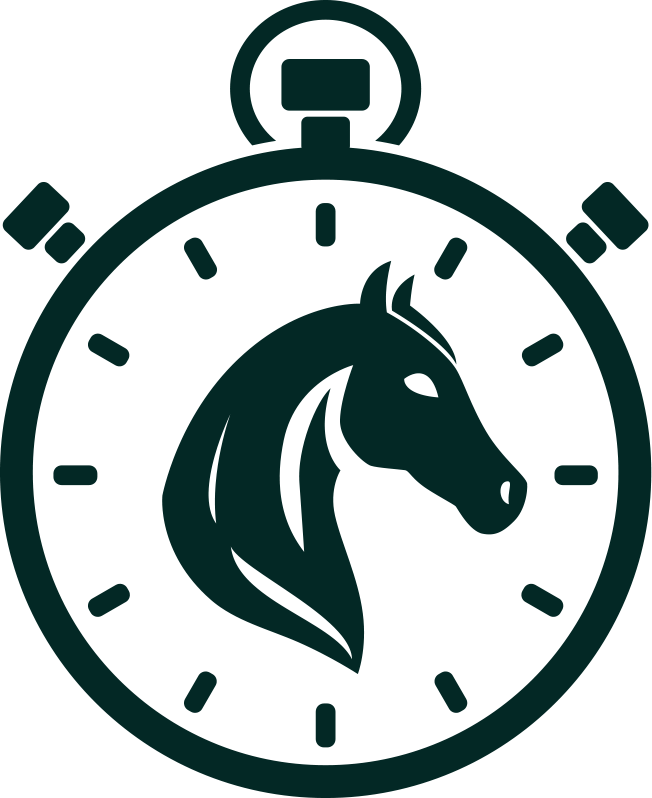Title: Why Secretariat’s Triple Crown Records Remain Unbroken After 50 Years
LEXINGTON, Ky. — If records are made to be broken, then Secretariat is a spectacular exception to the rule.
It has been 52 years since the 1973 Kentucky Derby winner accomplished record times in all three Triple Crown races, records that remain standing to this day.
The son of Bold Ruler covered the Kentucky Derby’s mile-and-a-quarter in 1:59.40. He won the Preakness, run at a mile-and-a-sixteenth, in an official time of 1:53. And, of course, he decimated the mile-and-a-half Belmont Stakes in 2:24 on the way to a jaw-dropping 31-length victory.
Yet while world records fall in most every timed sport, from track and field to swimming, with advancements in athletic training and nutrition and analytics, why is it that five decades later, all three of Secretariat’s record times have yet to be broken?
In 1989, Easy Goer ran the second-fastest Belmont Stakes at 2:26. In 2001, Monarchos ran the second-fastest Kentucky Derby at 1:59.97. In 2020, the filly Swiss Skydiver ran the second-fastest Preakness at 1:53.28.
Why has no horse run faster than Secretariat in those three races? And how come humans keep setting records, but horses don’t?
“I think, like most things in life, there’s no one reason for something to happen,” said Jay Privman, who for 25 years was the national correspondent for the Daily Racing Form. “There are multiple reasons. And you know what percentage of all the things I’m going to list you can ascribe to that? You know, I don’t know whether you know one thing is 5 percent or 10 percent of it, but I think there’s just a combination of factors that are the reason for it.”
Here are three:
No. 1: Secretariat was a freak
“The obvious answer is, well, he’s one of the best horses of all time,” said Evan Hammonds, former editorial editor of the Blood-Horse magazine, a staple of the breeding industry.
There’s no disputing that. If Secretariat is not the greatest racehorse of all time, he’s certainly the most legendary when it comes to Triple Crown racing, especially in the modern era.
“Secretariat was a freak,” Privman said. “It’s like why hasn’t anybody been as good as Michael Jordan? Well, maybe LeBron (James) is, but they don’t come along that often, right. So that’s one reason.”
“No. 1, Secretariat was arguably the greatest racehorse of all time,” said Randy Moss, longtime Triple Crown analyst for NBC. “That’s the simple answer. When you win the Belmont Stakes by 31 lengths in two minutes and 24 seconds that record is almost certainly never going to be broken.”
In the Kentucky Derby, Secretariat ran every quarter of a mile faster than the previous. In the Preakness, the son of Bold Ruler was last to leave the starting gate, then circled the field for the victory. His electronic time of 1:55 differed with Daily Racing Form clockers’ time of 1:53 2/5. A 2012 investigation changed the official time to 1:53 flat. As for the Belmont, well the performance speaks for itself.
“The Triple Crown measures 3-year-old horses over a five-week period in the spring of that year,” said Tim Layden, who covered the Triple Crown for Sports Illustrated and now adds to NBC’s coverage. “It really is a tiny and very specific sample. And what we can say for certain is that no 3-year-old has ever been faster and fitter than Secretariat was in the spring of 1973.”
No. 2: Tracks have changed
Secretariat’s 1973 marks came at a time when thoroughbred tracks believed that faster times made for entertaining racing. The faster the better. Over time, the emphasis has changed.
“Back in the bad old days, the tracks were kind of souped up on big days,” Privman said. “They don’t do that anymore. … I think there was a belief among track management people 50-some-odd years ago that fast times were exciting for people to see. I think the prevailing notion (now) is we want them to be fast, but we’re more interested in them being safe. I don’t think the tracks are as speed-oriented as they once were.”
There is much more scrutiny now concerning equine fatalities. Faster conditions have given way to safer conditions, especially now that in some quarters the sport is fighting merely to survive.
“Over the last 15 years or so, there’s been a huge shift in equine safety,” Hammonds said. “So tracks superintendents, instead of souping up racetracks or scraping them for speed, they’re trying to keep them safe. If they’re safe, they’re slower. There’s more soft material, materials added to the track surface.”
“The tracks are slightly deeper, more cushioned and less conducive to very fast running times,” Moss said. “The year that Secretariat won the Kentucky Derby in 1973 the racetrack surface was exceptionally fast that day. Now, it was still a powerhouse performance. I think Sham might have been a Triple Crown winner any other year, and I think he was 8 lengths ahead of the third-place horse. So the combination of the greatest horse of all time running on a racetrack surface that was extremely fast is another good reason why the Kentucky Derby record has never been broken.”
Consider Monarchos’ victory in the 2001 Kentucky Derby. His winning time that day, 1:59.97, is the second-fastest in race history, behind Secretariat. The track was so fast that day, three of the first four races resulted in track records.
“I think the track did us in,” said trainer Todd Pletcher that day after his horse, Trippi, finished seventh in the Grade 2 Churchill Downs Handicap, the third race that day. “It’s just ridiculous today. What are they going to do, set nine records today?”
Churchill Downs superintendent Butch Lehr defended the surface, saying, “I think right now we’ve got it perfect. The weather is perfect and the horses are getting hold of it.”
“I remember that day well because the undercard was on ESPN,” Privman said. “One of the people who were on the telecast that day was sort of raving about how great that was. I was sort of cringing at what was happening because I was like, ‘this is not a good situation.’ ”
Over time, the sport has come to realize that.
“There hasn’t been a new track record on dirt at Belmont in like 12 or 13 or 14 years,” Hammonds said. “You would think that was kind of odd with training methods.”
It’s not that odd when you consider the emphasis now on safety.
“Nobody’s going to walk out of the track on Derby Day disappointed if somebody doesn’t set a track record,” Privman said. “They’re going to be disappointed if a horse gets badly injured.”
No. 3: Changes in the breed
If Secretariat’s records are a combination of equine talent and changing track surfaces, might the condition of the breed also be a factor?
“I don’t know, but that’s a very well-informed I don’t know,” said Ted Kalbfleisch, an equine geneticist who is director at the University of Kentucky’s Gluck Equine Research Center. “Those of us who are studying genetics are studying one gene at a time. … The genetics of a racehorse, well that’s with the breeders and always will be. They’re using pedigree as a surrogate for, you know, the sorts of measurements that we look at, but all horses are different, and Secretariat was truly an exceptional animal.”
Thoroughbred horses are exceptional animals, themselves. In fact, Kalbfleisch was part of a recent groundbreaking study that showed that horses bypass a gene that acts as a stop sign for other animals. Titled, “Running a genetic stop sign accelerates oxygen metabolism and energy production in horses,” the study helps explain why horses are such powerful athletes.
“It was a huge shock and a huge surprise,” Kalbfleisch said. “We’ve always wondered what the mechanism of oxygen metabolism is in horses. This might actually answer the question of why can these animals, that are this large, run this fast and this far without collapsing.”
As a breed, are horses as fast as they once were?
“The breed is not as sturdy as it used to be,” Moss said. “But one of the primary reasons that they’re less sound and less sturdy is because they’re so darn fast. They are bred for speed with very little attention paid to durability or stamina.”
Nutrition has improved greatly. Horses are now bigger and stronger, which should produce faster horses.
“I think if you go back with horses being bred specifically for performance in this country for a couple hundred years, with every generation trying to optimize that performance,” Privman said. “I think that the peak performance for horses was reached, or has been reached, where I don’t think it has been reached yet with humans. We’re probably getting closer to that point.”
“It might be true that these animals are approaching a physical maximum,” Kalbfleisch said. “Secretariat, whether it was genetic, whether it was environmental, it worked out for him to be extraordinary among these animals.”
And there was an era when an effort was made to go beyond the maximum.
“This is a bit more controversial,” said Moss, when giving his third reason why Secretariat’s records have not been broken. “Secretariat and the horses that followed Secretariat in the 1980s and 1990s until about the mid 2000s were running when anabolic steroid use was first beginning to be prevalent in the sport of horse racing. That’s from what trainers have told me and certainly it expanded to the point that by the time Big Brown ran in the Kentucky Derby and the Triple Crown in 2008 virtually every horse running in the Triple Crown that year was running on a regimen of anabolic steroids that has since been abolished in the sport.”
Moss emphasized that he wasn’t saying that Secretariat was on anabolic steroids. Even if he was, the practice was legal in the Kentucky Derby until 2009.
In the end, records or no records, electronic times notwithstanding, Secretariat’s Triple Crown run was a spectacular feat that may never be duplicated.
“Bob Beamon’s record was just a jump in Mexico City,” Kalbfleisch said of the famous 1968 long-jump world record that went unbroken for almost 23 years. “Secretariat’s Belmont was a more impressive feat. Could he have done it again? I don’t know.”
“It only adds to the myth that Secretariat only ran a few times after the Belmont, and never as dominantly,” Layden said. “He retired at 3. All of which keeps that spring of ‘73 in a very special box.”
Will there ever be another Secretariat?
“I don’t know that (the breed) has changed to the degree that an animal like him isn’t possible again,” Kalbfleisch said. “But at the same time, it may be a very long time before we see anything like that again.”
2025 Kentucky Derby
— What: 151st running of the first leg of thoroughbred racing’s Triple Crown
— When: May 3 at 6:57 p.m. EDT
— Where: Churchill Downs in Louisville
— TV: NBC
— Purse: $5 million
— Derby post-position draw: April 26 at 7:15 p.m. EDT







